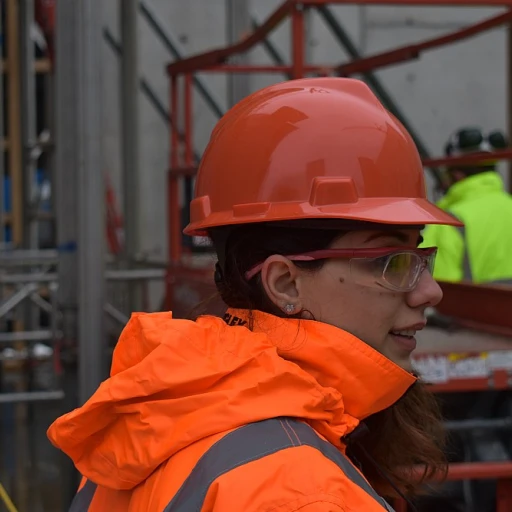
Defining Situational Assessment in Talent Acquisition
What is Situational Assessment in Talent Acquisition?
In the realm of talent acquisition, situational assessment acts as a crucial step to evaluate potential candidates beyond their resumes and traditional interviews. It aims to provide a multi-dimensional picture of a candidate's ability to handle real-life situations. This method is vital in uncovering soft skills, which are often difficult to assess through standard methods. Situational assessments typically involve presenting candidates with hypothetical scenarios relevant to the job role to gauge their decision making and problem-solving capabilities. For instance, how a candidate might handle a tight deadline at work or address a conflict within a team. It's not just about what they know but how they apply their knowledge in specific situations.The Necessity of Situational Judgement Tests
Situational judgement tests form a significant part of this assessment process. They offer valuable insights into a candidate's practical thinking and judgement. These tests are crafted to mimic the actual job environment, helping identify whether candidates possess the necessary skills to thrive in the role they aspire to. For candidates with disabilities, such as those who are deaf, situational assessments should be adapted to ensure fairness and accessibility, aligning with best practices from resources like gov websites or vocational rehabilitation services. This ensures that all candidates are given an equal opportunity to demonstrate their capabilities and fit for the position.Applying Effective Assessment Tools
Integrating effective tools and techniques, including practice tests and situational assessments, into your talent acquisition strategy can make a significant difference. These tools not only help in making informed decisions but also enhance the overall hiring process. For those looking to enhance their talent acquisition strategies further, consider exploring various effective assessment tools. These resources provide comprehensive guidance on effectively conducting situational judgments and assessments, which can be pivotal in making the right hiring decisions and ensuring the alignment of new hires with organizational needs. Situational assessments, when executed accurately, can be a powerful way to foresee how a candidate will perform, helping organizations select candidates who are indeed the right fit for their culture and community of stakeholders.Identifying Key Challenges in Talent Acquisition
Confronting Essential Obstacles in Talent Acquisition
In the intricate landscape of talent acquisition, organizations frequently confront various challenges that hinder their hiring processes. One of the pervasive hurdles includes accommodating the diverse needs of candidates, such as disabilities including those who are deaf, ensuring that the recruitment scenario remains inclusive and equitable. This necessitates the use of situational assessment practices to effectively measure soft skills and the ability to adapt to real-work situations.
Moreover, identifying the right skills, both technical and soft, has become increasingly nuanced. Stakeholders often face difficulties in applying judgement tests appropriately to make informed decisions about a candidate's suitability for the actual job. For instance, resources like situational judgement and verbal and numerical reasoning tests can help identify potential hires who are not only competent but also culturally fit for the organization.
Further complicating matters, navigating the myriad of assessment services available can be daunting. Many organizations seek guidance from gov websites and vocational rehabilitation services to integrate best practices in their talent assessment processes. These resources are particularly crucial in making situational assessments a vital tool in enhancing decision making.
In today's digitally driven world, online social media platforms and other digital resources provide a double-edged sword, offering both a wider talent pool and an overload of data that makes identifying suitable candidates challenging. Collaborating with the community and key stakeholders can aid in refining the situational assessment criteria to effectively address these challenges, aligning them with organizational objectives for better talent acquisition outcomes.
Tools and Techniques for Effective Situational Assessment
Implementing Effective Techniques and Tools
To carry out a successful situational assessment in talent acquisition, employing robust tools and techniques is crucial. These resources help identify the specific skills and behaviours required for an actual job role, enabling stakeholders to make informed decisions.
Situational judgement tests stand as a valuable tool in this regard. By presenting candidates with hypothetical, job-related scenarios, these tests gauge their decision-making and soft skills, important for the community they will serve. Such assessments help predict future job performance and align applicants with the organizational culture.
Practice and Formative Tests: Regular practice tests and formative assessments are instrumental in supporting candidates, particularly for those seeking vocational rehabilitation. This approach helps candidates with disabilities, like those who are deaf, build confidence in their abilities and reduce anxiety in testing environments.
- Assessment Services: Assessment services offer comprehensive packages including verbal reasoning, numerical reasoning, and situation assessment tests, which measure candidates’ capabilities more holistically.
- Digital Platforms and Gov Websites: Leveraging social media and government websites provides access to a wide array of resources and stakeholders. These platforms can introduce potential candidates to assessment situational strategies and best practices.
- Health and Vocational Evaluations: Health assessments focus on understanding a candidate's physical and mental well-being, ensuring they are fit for the role. Meanwhile, vocational evaluations emphasize the candidate's capacity to perform job-specific tasks effectively.
Considering our ongoing commitment to integrating innovative solutions in talent acquisition, exploring essential questions to ask HR during your interview can further refine your approach in identifying candidate readiness, thus aligning the situational assessments effortlessly with the organizational objectives.
Integrating Situational Assessment into Your Hiring Process
Embedding Situational Assessment into Your Recruitment Practices
Integrating situational assessment into your hiring process effectively can significantly impact your talent acquisition success. By aligning assessment services with recruitment activities, businesses can tap into a broader range of skills and competencies, ensuring that they make informed decisions when selecting candidates for actual jobs. Here's how to achieve that seamless integration:- Collaboration with Stakeholders: Work closely with hiring managers, HR teams, and community stakeholders to tailor situational assessments to your organization’s needs. This collaboration helps identify key job requirements and core competencies essential for success.
- Adopting Best Practices: Implement best practices by incorporating multiple types of assessments, such as situational judgement tests, verbal reasoning, and numerical reasoning. These assessments evaluate an individual's soft skills, decision-making abilities, and other integral attributes. Access resources like gov websites to stay updated on guidelines and best practices in the field.
- Inclusivity and Accessibility: Ensure that your assessment protocols are inclusive for all candidates, including those with disabilities like deaf candidates. Employ adaptive assessment tools to provide equal opportunities and leverage vocational rehabilitation resources to promote equity.
- Utilizing Technology: With advancements in digital tools, integrate social media and other online platforms to facilitate situational assessments. These platforms offer practice tests and various formats that mimic real-world situations that candidates may face on the job.
Case Studies: Success Stories in Talent Acquisition
Success Stories Highlighting the Impact of Situational Assessment in Talent Acquisition
Incorporating situational assessments within the talent acquisition strategy has proven beneficial for many organizations, allowing them to make more informed decisions and better identify skills that align with their job requirements. Here are some examples of how various companies have successfully integrated these assessments into their hiring processes:- Company X: This firm utilized situational judgement tests to identify candidates with the right soft skills and decision-making abilities crucial for client-facing roles. By customizing these tests to reflect actual job scenarios, they witnessed a significant reduction in turnover rates, as new hires quickly adapted and excelled in their roles.
- Organization Y: Recognizing the importance of diverse perspectives, Organization Y tailored their situational assessments to accommodate different forms of communication, such as verbal and non-verbal reasoning. This inclusive approach ensured candidates from the deaf community or those with disabilities were fairly evaluated, aligning with their commitment to diversity and health-driven workplace practices.
- Nonprofit Z: To better serve their stakeholders and community, this nonprofit incorporated situation assessments to select candidates for roles that require strong vocational rehabilitation techniques. The assessment services helped them identify individuals who would thrive in situations requiring critical thinking and adaptability.
Future Trends in Talent Acquisition and Situational Assessment
Emerging Trends in Talent Acquisition and Its Future
As technology and workplace environments continue to evolve, several trends are emerging in the field of talent acquisition, particularly in how situational assessments are utilized. The future of talent acquisition is poised to harness these developments, making the hiring process more efficient and inclusive.- Increased Use of AI and Machine Learning: Artificial intelligence and machine learning are increasingly being integrated into the process of conducting situational assessments. These technologies can help identify patterns in candidate responses, enhancing the predictability of success in a role by analyzing performance in specific situations.
- Focus on Soft Skills: While technical skills remain important, there is a growing emphasis on assessing soft skills through situational judgement tests. Employers are realizing the significance of abilities like communication, problem-solving, and adaptability, which are critical for team success.
- Greater Inclusivity and Accessibility: Companies are also paying attention to inclusivity in the hiring process. This involves making sure that assessment services are accessible to individuals with disabilities, including native adaptations for those who are deaf or have similar impairments. Providing practice tests and resources available on government websites ensures that everyone has an equal chance to display their capabilities.
- Innovative Assessment Tools: New tools that incorporate verbal and numerical reasoning tests are being developed, offering a more comprehensive evaluation of a candidate's suitability for a particular job. These tools assist in making informed decisions by simulating actual job situations where vocational rehabilitation might come into play.
- Integration with Social Media: Social media platforms are becoming a part of the situational assessment strategy, allowing recruiters to see how candidates handle communication and decision-making scenarios in a community of peers and stakeholders.








